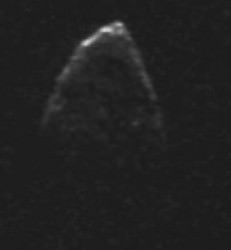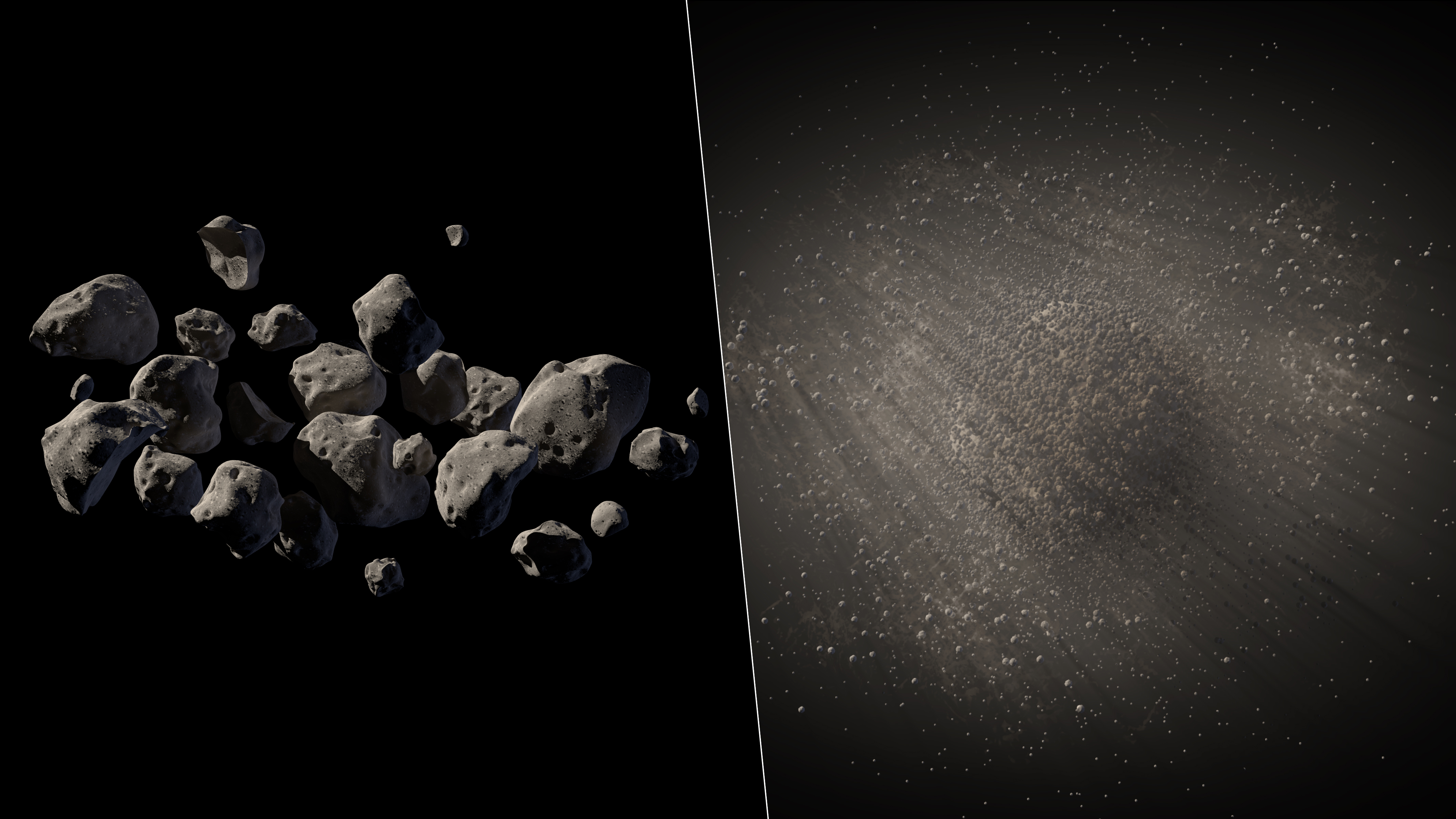How do asteroids hold their rubble piles together? Previously, scientists said it was a combination of friction and gravity. But new observations of asteroid 1950 DA reveals something else is at work. The asteroid is rotating too quickly for gravity to keep it together, so what’s going on?
“We found that 1950 DA is rotating faster than the breakup limit for its density,” stated Ben Rozitis, a postdoctoral researcher at the University of Tennessee, Knoxville who led the research. “So if just gravity were holding this rubble pile together, as is generally assumed, it would fly apart. Therefore, interparticle cohesive forces must be holding it together.”

Cohesive forces refer to the act of individual molecules or particles sticking together. It’s the first time scientists have found this in action on an asteroid. Better yet, if confirmed in other asteroids this has implications for protecting Earth from a killer asteroid should one come our way.
If the threat turns out to be a loosely held together asteroid, an impact in just the right spot would break the single asteroid into many. (Of course, you’d want to make sure that the problem doesn’t end up turning into multiple smaller asteroids hitting Earth instead of a single large one.)
Now the researchers are interested in knowing if cohesive forces are also in action on Comet 67P/Churyumov–Gerasimenko — the comet being examined by Rosetta right now and in November, by the lander Philae.
The study was published in the journal Nature.


Got static cling? Gravity AND tribo-electric charge(s) leading to structural cohesion? Those charges inducing magnetic fields that act as “seed scaffolding” for subsequent molecular bonding and eventual gravitational compression?
Magnetic fields, no. You need to many charges moving and too fast.
But static attraction is possible when solar wind could somehow crate a charge separation between the inner/outer or lit and dark section. Maybe charges could be trapped in pockets.
Whatever it is, the + and the – charges must be equal to zero. Too many + and they get repelled by the other + charges. The same of the – charges that would eject the – charges from the comet.
Ahem… passing solar wind particles carry and can imbue in their passage, charges to dust and ice particles. The solar wind mostly consists of protons, positive charged particles, and electrons, negative charged particles. These charged particles have a common name, plasma.
From http://pluto.space.swri.edu/image/glossary/plasma.html “In addition to externally imposed fields, such as the Earth’s magnetic field or the interplanetary magnetic field, the plasma is acted upon by electric and magnetic fields created within the plasma itself through localized charge concentrations and electric currents that result from the differential motion of the ions and electrons. The forces exerted by these fields on the charged particles that make up the plasma act over long distances and impart to the particles’ behavior a coherent, collective quality that neutral gases do not display. (Despite the existence of localized charge concentrations and electric potentials, a plasma is electrically “quasi-neutral,” because, in aggregate, there are approximately equal numbers of positively and negatively charged particles distributed so that their charges cancel.)”
So of course, plasma’s interact with matter.
Please don’t go in the EU theory. The fact that solar wind is called plasma has no meaning whatsoever on this scale of an asteroid.
Solar wind has a charge that is zero. You have equal + and – charges moving in the same direction and this cancel out each others magnetic and electric field.
The number of + and – charges colliding on the asteroid will be equal and therefore the average charge zero. However the mass differences between the + and – could bend the trajectory slightly near the surface of the asteroid and creates pockets of + and pockets of – enough to have some effect because they attract each other.
If the asteroid gets hit and breaks up into smaller parts, wouldn’t the smaller parts cause smaller damage, even burn harmlessly in the atmosphere? So, in the sum, wouldn’t that be more preferable than the whole asteroid in one piece falling down?
Assume a 100m (300 ft) asteroid hit, breaking up into pieces of 10-50m big?
Isn’t there a significant difference between a piece 10-50m (30-150 ft) and a piece 100m big hitting the Earth? The mass drops by a factor of x^3, so the 50m piece might be 8 times lighter…?
Sure, deflecting the whole thing as a whole is better, but I understand it takes much more time in advance – way much more time – to plan and build a deflector mission than a rocket with a bomb…? What if we don’t discover the thing soon enough?
I am wondering if the solar wind somehow can create vacuum pockets.
van der Waals?
My God, it’s full of geckos.
(actually, van der Waals is no surprise)